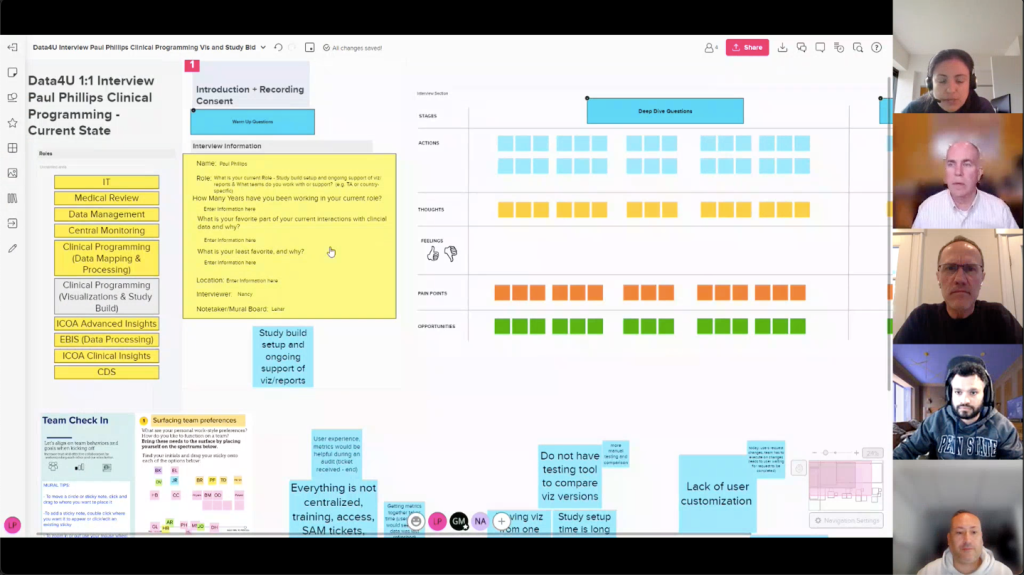Data4U, UX and the Art of the Interview
Part of the Janssen Pharmaceutical Companies of Johnson & Johnson, the Data4U group approached us at rVR to solve the issues plaguing their clinical data platform. Their goal was to transform clinical data from different sources into centralized information made available to users in a timely manner.
- Data4U Problem Statement
- The number of data sources collected for each clinical trial had drastically increased, impacting cycle times, specifically LPLV to DBL cycle times. The holdups were attributed to manual data review and mapping and standardization challenges. These complexities of data management, mostly manual processes, compounded with lack of near real-time access to data, caused significant delays in decision making, prolonging the drug development lifecycle, and resulting in a negative financial impact.
- Separate visualization dashboards with limited communication capabilities in different environments forced the users to navigate multiple systems.
- Modernize and mature the Clinical Data Repository (CDR), Data Management Environment (DME) and Integrated Clinical Analytics (ICAP) capabilities to enable accelerated business decisions based on real time clinical data.
- The rVR Approach
- To solve the issues plaguing the clinical data platform, we used the EV (Experience Validation) approach central to our UX projects.
- First step in the first phase of the EV process is to understand the current state. In a core team meeting, we defined the project’s objective and its measures of success. At this stage we learned about the users’ pain points. Everything is captured on Mural.
- Then we formulated an ideal state: Through one-on-one user interviews over Zoom and using Mural, we verified the users’ experiences and defined the ideal user journey and future state.
- Finally, the core team regrouped and aligned on key objectives for a MVP.
In these crucial first steps, the art of the interview is the paramount tool for success. The goal is to validate behaviors and user needs.
- Hearing the voice of your customer is the single most important step you can take to make data-driven decisions for your customers.
- Identify whom you are targeting and understand what they want to solve.
- Write all your questions in an unbiased manner and encourage participants to provide both positive and negative feedback.
- Allow the participant to take control when answering questions and remain quiet as they speak. Don’t interrupt stories as these provide deeper understanding into the problems.
- Do not be afraid to ask follow-up questions or recap your interpretations to the interviewee.
.


